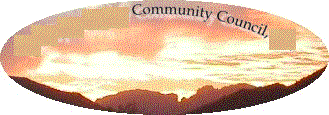11. What is an Improvement District?
An improvement district is designed to provide neighbors a method of accomplishing local improvements and distributing the cost among all property owners who benefit.
12. How do I go about getting one organized?
To initiate an improvement district, a request for a petition must be submitted, in writing, to the Office of the Superintendent of Streets, outlining the extent of the improvements desired. A petition, which includes the district boundary and a cost estimate, will then be returned to obtain signatures of either a majority of persons owning real property within the district or the owners of fifty-one percent (51%) or more of the real property owners within the district.
Upon receipt of a petition with sufficient signatures, the Superintendent of Streets will proceed with formation of the district. Proceedings and hearings as required by state law will be conducted with the Maricopa County Board of Supervisors serving as the Board of Directors of the district. This process, from start to finish, takes a minimum of eight (8) months to complete, depending on design and construction time requirements.
13. How do I pay for the improvements?
The total cost of the improvement is either financed by special assessment bonds purchased through public bid or collected annually on the tax roll (for street lights and road maintenance).
Once the improvements are complete, an assessment is placed on every lot and/or parcel within the district. For districts financed with bonds, the assessment may be paid for:
a) In cash, during the time provided, normally 30 days, or'
b) By semiannual installment of principal and interest (May and November), for a period not to exceed 25 years.
If, after an assessment has gone to bond and an early payoff is desired, the payoff will include the unpaid principal balance PLUS interest to the next payment period PLUS a five percent (5%) penalty on the unpaid balance (premium to bond holder). 14. What if I can't make the payments?
If an assessment becomes delinquent, the district is obligated to sell the property covered by that assessment to pay the special assessment bonds. The buyer is required to hold the lien for a minimum of one year before applying for a Superintendent of Streets deed of the property. During that period, the assessment lien must be paid in full, plus penalties. Once a deed is issued, the buyer has control of its redemption value.
15. Who can I talk to for more information?
For further information on improvement districts within unincorporated areas of Maricopa County, contact the Office of the Superintendent of Streets at (602)506-8798.
16. I don't want to have my road paved but I would like to have my road graded.
Due to current legal restrictions, we are not accepting any new roads for grading. Only roads that have been paved to county standards will be accepted for maintenance by MCDOT.
17.How often is the road graded?
The road is graded approximately six times per year.
18 How can I discontinue maintenance of a dirt road improvement district?
Maintenance established by this proposed improvement district shall not be terminated until an alternate form of perpetual maintenance is approved by the Board of Directors or until the district incorporates into a municipality or the district is annexed by a municipality. |

